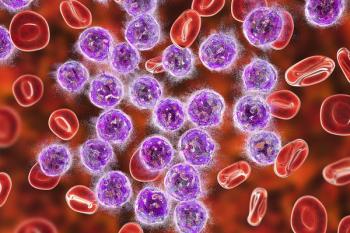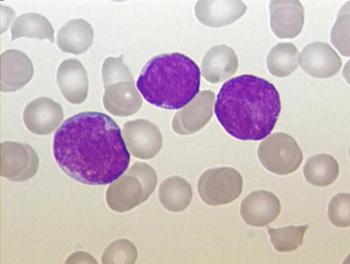
MRD-Adapted Therapy Approach Yields Good Results in CLL Patients
Abbreviated chemotherapy is as effective as a full course in patients with chronic lymphocytic leukemia who achieve early minimal residual disease–negative complete responses.
Abbreviated chemotherapy is as effective as a full course in patients with chronic lymphocytic leukemia (CLL) who achieve early minimal residual disease–negative complete responses (MRD-negative CRs), according to a phase II trial.
“Flow cytometry, assessing MRD status with a sensitivity of one CLL cell detectable in 10,000 leukocytes, is a robust predictor of progression-free survival and overall survival after therapy,” wrote study authors led by Niamh Appleby, FRCPath, of St. James’s Hospital and Trinity College Dublin in Ireland. “Attainment of MRD negativity is accepted…as a surrogate marker for overall survival.”
This trial assessed whether patients in radiological complete response with an MRD-negative marrow after 4 cycles of therapy with fludarabine, cyclophosphamide, and rituximab (FCR4) could safely stop treatment, rather than continue through 6 cycles of that regimen (FCR6); it included 52 patients with non-del(17p) CLL, 18 (34.6%) of whom reached MRD-negative CR after FCR4 and stopped the therapy. Results of the study were
Twenty-eight patients had detectable disease after FCR4 and proceeded to the 6-cycle course of treatment. Another 11 patients were MRD-negative at the end of treatment. For the full cohort, the median time to treatment failure (TTF) was 71.1 months, and the median overall survival has not yet been reached. Six patients died after a median follow-up of 62.3 months: five patients died due to progressive disease, and one died of T-cell lymphoma.
The most significant prognostic factor for TTF was MRD status at end of treatment. Those who were MRD-negative at that point had a TTF of 85.3 months, compared with 59.2 months in those who were not (P = .0008). There was no significant difference, however, between those who attained an MRD-negative CR with FCR4 vs FCR6; the former had a TTF of 82.2 months, compared with 85.3 months in the latter (P = .6306).
The presence of mutated immunoglobulin heavy chain gene rearrangements (IGHV) was associated with early MRD-negative remissions, and this translated into prolonged TTF, the authors noted.
Almost all patients (98.1%) experienced at least one grade 3/4 adverse event. Grade 3/4 neutropenia occurred in 30.8% of patients, and 12% of patients had a grade 3/4 infection. There were no treatment-related deaths. Dose reductions were required in 28.8% of patients, and 19.2% of patients withdrew from treatment.
“This is the first prospective study to use an MRD-adapted strategy to reduce patient exposure to effective but toxic therapy,” the authors wrote. “Our results confirm the feasibility of interim MRD assessment to direct treatment duration.”
Newsletter
Stay up to date on recent advances in the multidisciplinary approach to cancer.





